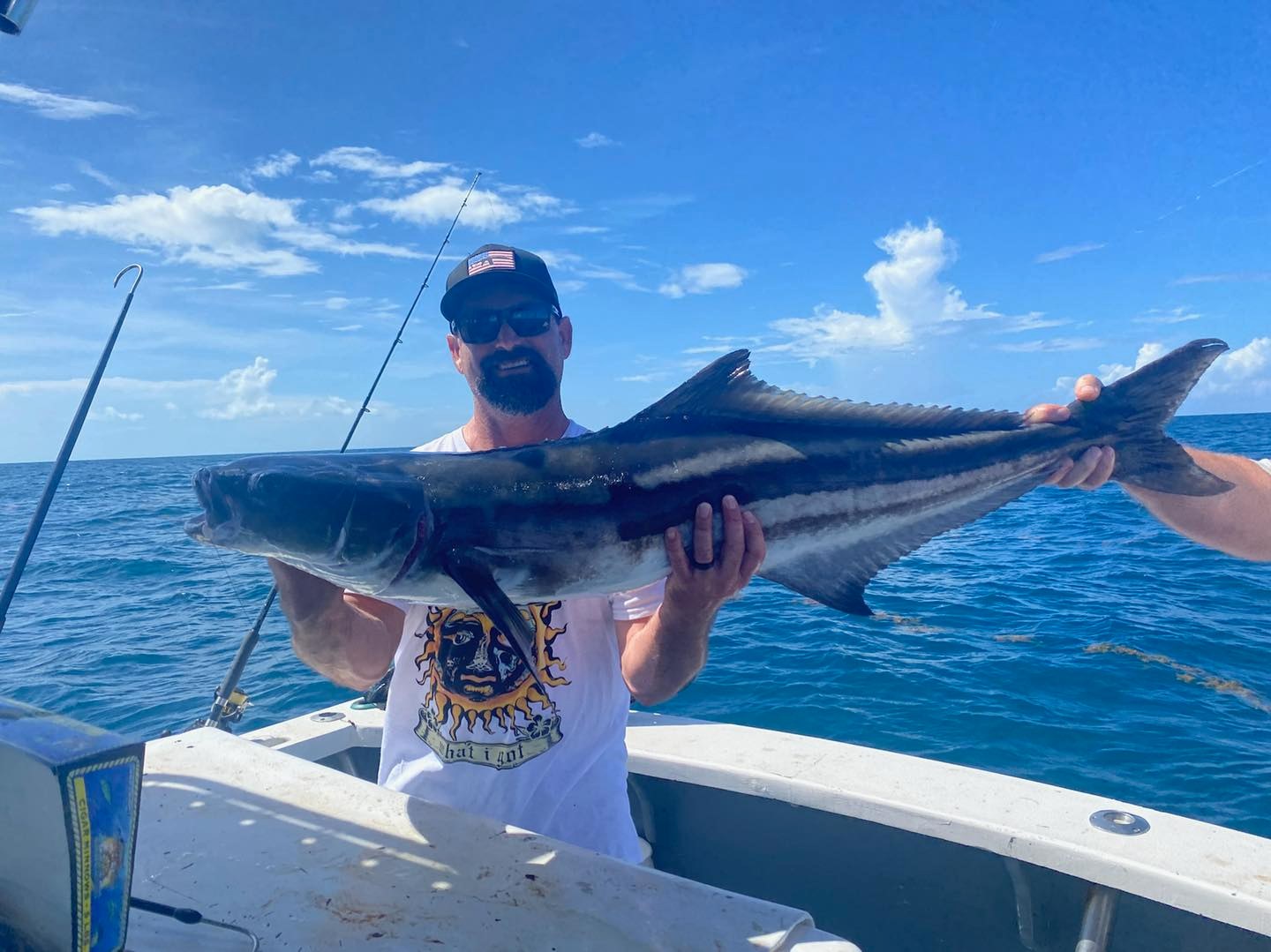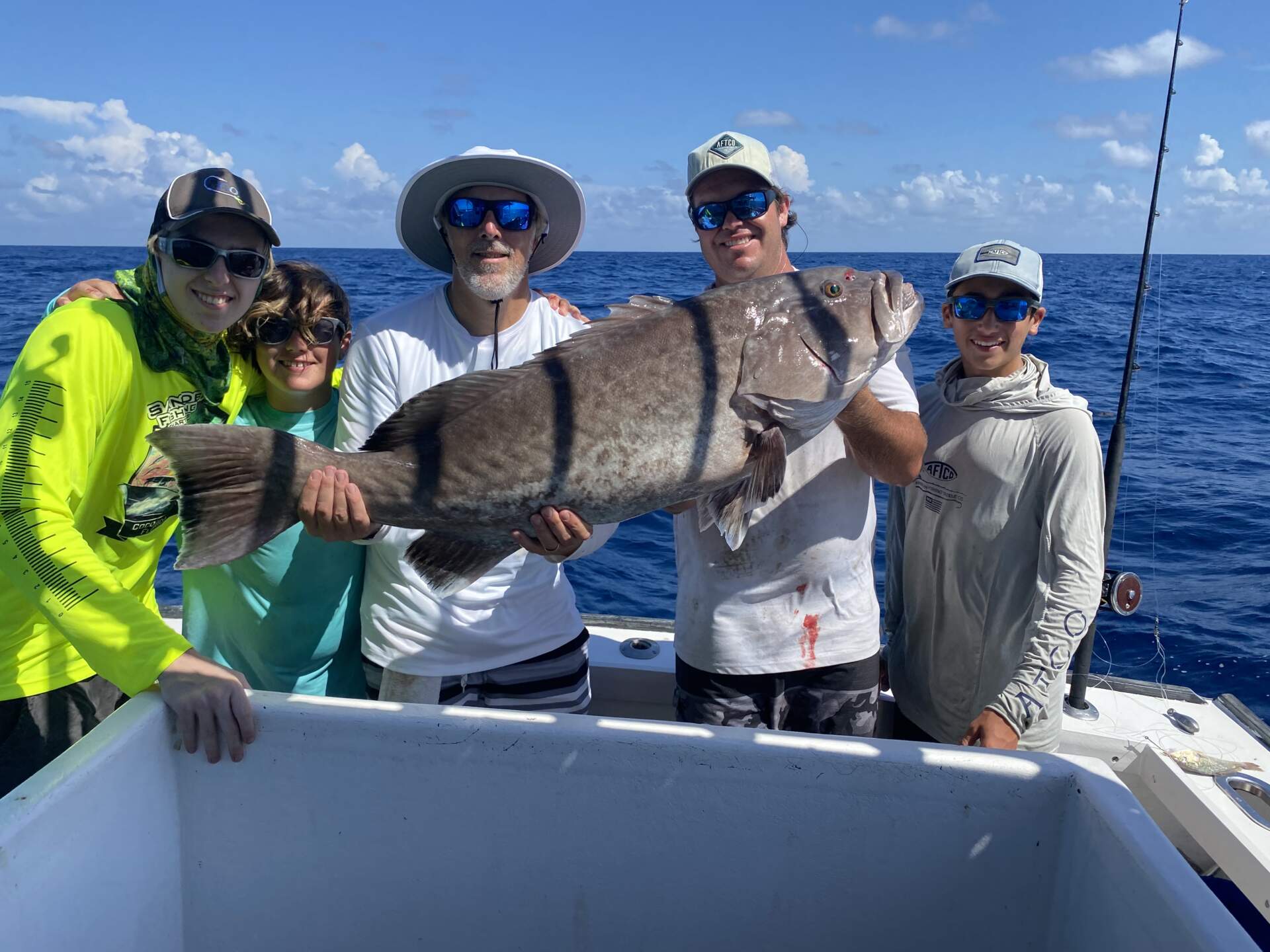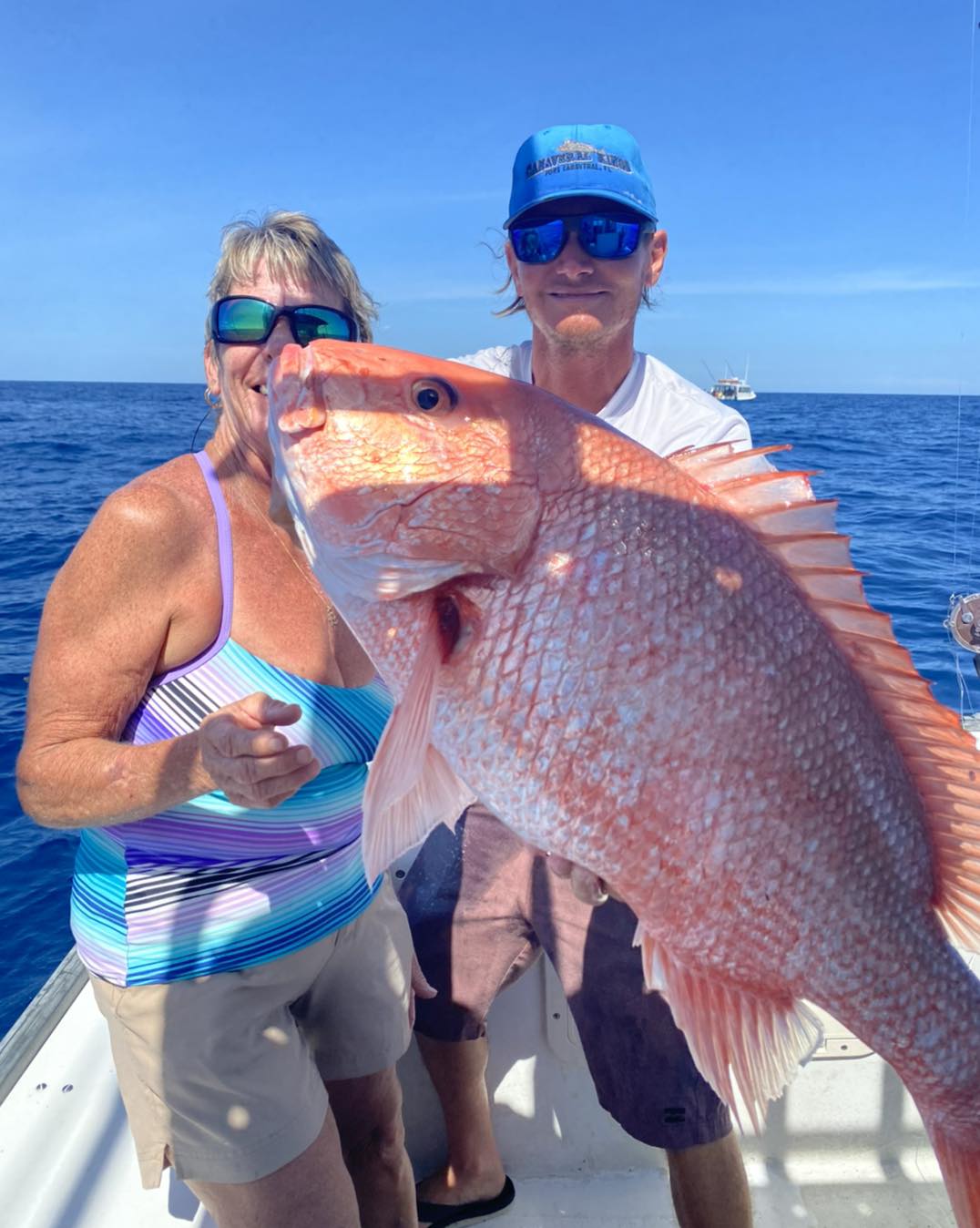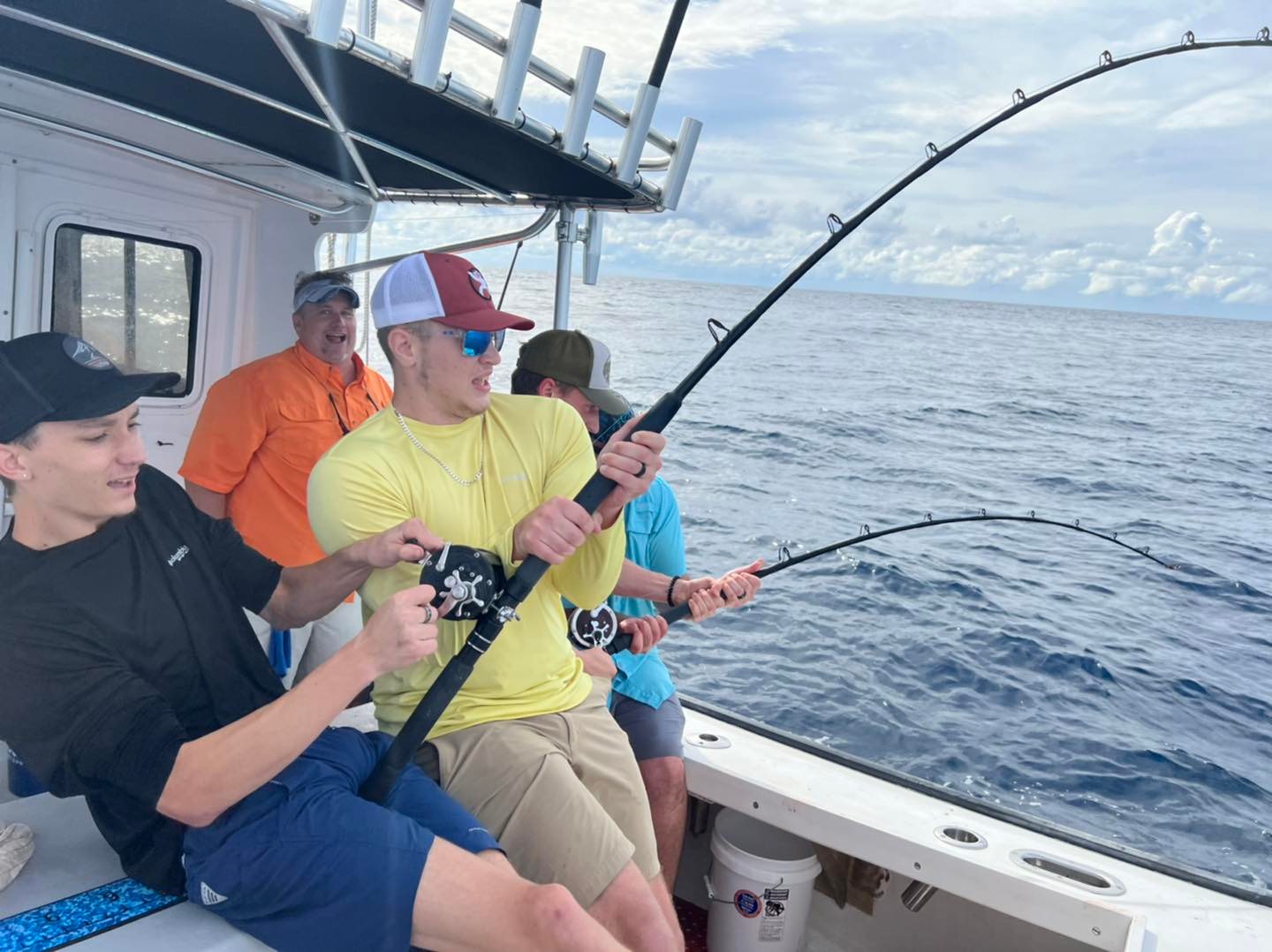Last Updated on November 29, 2023 by Eric
If you’re looking to get into fishing, or maybe just trying to understand a bit more about different fishing techniques, you’ve come to the right place. Let’s talk about fishing down at Port Canaveral, a spot that’s not just popular, but also pretty rewarding for fishermen of all stripes.
Now, there are a couple of fishing methods that really stand out here – trolling and bottom fishing. These aren’t just fancy terms; they’re practical ways to fish that cater to different styles and preferences. Whether you’re out there in a boat just enjoying the breeze or seriously hunting for that big catch, knowing these methods can make a big difference.
Trolling is kind of like taking a leisurely drive with your fishing line out. You’re moving along in your boat, trailing your bait or lure behind. This method is great for covering a lot of water and is especially effective for catching those fast-moving fish that like to chase their prey.
On the flip side, bottom fishing is more like setting up camp at a spot and waiting patiently. You drop your bait down to the seabed and wait for the fish that dwell down there to bite. It’s a bit more laid back but requires a good deal of patience and skill to get right.
Both methods have their own charm and challenges. So, whether you’re planning to spend a day out on the water or just curious about how it all works, understanding trolling and bottom fishing is a great start. Let’s dive into the details and see what makes each method tick, and why they might just be your next favorite way to fish.
Understanding Trolling: Techniques and Benefits
When it comes to fishing, trolling is a bit like the multitasker of the sea. It’s a technique where you’re moving the boat and dragging your line behind. Think of it as fishing on the go. It’s not just aimless cruising, though; there’s a method to it that can make all the difference in what you catch.
First off, let’s talk about setting up for trolling. You’ll want your line out behind the boat, but the key is in how you set your bait or lure. You see, the goal is to mimic a small fish swimming through the water. That’s what gets the attention of the bigger fish we’re after. You can adjust the depth of your line depending on what fish you’re targeting. Some fish like to hang out near the surface, others a bit deeper.
Now, the real charm of trolling is how much water you can cover. Unlike sitting in one spot, trolling lets you explore a large area. This increases your chances of finding fish. It’s especially useful when you’re not sure where the fish are biting that day.
The variety of fish you can catch while trolling is pretty neat too. In waters like those around Port Canaveral, you could hook into anything from a speedy wahoo to a graceful sailfish. It’s a bit of a mixed bag, but that’s part of the fun. Each trip can bring a surprise.
Another plus of trolling is that it can be a more relaxed way to fish. You’re letting the boat and the gear do most of the work. This means you can take in the surroundings, enjoy the ride, and still have a line out for that big catch.
So, why choose trolling? It’s great for covering more ground, gives you a shot at a variety of fish, and can be a more laid-back way to spend a day on the water. It’s about enjoying the fishing experience as much as the catch itself.

Key Species Targeted Through Trolling
Trolling in the open waters, especially around areas like Port Canaveral, gives you a chance at some really exciting catches. Let’s talk about a few of the main players you might encounter on your line: king mackerel, wahoo, tuna, and sailfish.
King mackerel, or “kingfish,” are a popular target. They’re fast, put up a good fight, and are pretty abundant. Trolling works well for them because they’re always on the move, chasing baitfish near the surface.
Wahoo are another thrill. These are some of the fastest fish in the ocean. They’re known for their sudden, powerful runs when hooked. Trolling is ideal for wahoo because it mimics the fast-moving bait they’re after.
Tuna, now they’re a diverse bunch. You might hook anything from a smaller skipjack to a massive bluefin. They vary in where they swim, but a lot of them like the deeper waters. Trolling allows you to target these depths effectively.
And then there’s the sailfish, the acrobats of the sea. They’re known for their spectacular jumps and speed. Trolling attracts sailfish because it imitates the small fish they hunt.
Each of these species has its own habits and preferences, but what they have in common is their love for chasing prey. That’s what makes trolling such a great method for targeting them. You’re essentially setting the stage for a chase, right there at the end of your line.

Trolling Equipment and Best Practices
When it comes to trolling, having the right gear can make a big difference. Let’s break down the basics.
First up, you need a sturdy rod and reel. Trolling can involve some pretty big fish, so you want something that can handle the weight and the fight. A good medium to heavy rod paired with a reel that can hold a decent amount of line is a solid choice.
Then, there’s the line itself. Braided lines are popular because they’re strong and can hold up against the big ones. Plus, they let you feel the slightest nibble, which is always a plus.
As for lures, it’s all about what you’re fishing for. Different fish are attracted to different shapes, sizes, and colors. It’s about matching the hatch – basically, using lures that look like what the fish are eating.
Now, for some best practices. Speed is key in trolling. You want to move fast enough to keep your lures swimming properly, but not so fast that the fish can’t catch up. It’s a balance that depends on the fish you’re after.
Another tip is to vary your depths. Fish aren’t always hanging out at the same level, so using different lengths of line can help you cover more water vertically.
Lastly, keep an eye on the weather and water conditions. Things like water temperature and clarity can affect where the fish are and how they’re behaving. Being aware of your environment helps you adjust your tactics.
In a nutshell, successful trolling is about having the right gear, setting the right speed, and being mindful of the conditions. It’s about putting yourself in the best position to make that great catch.

Understanding Bottom Fishing: Techniques and Challenges
Bottom fishing is a whole different ball game compared to trolling. It’s about being patient, strategic, and having a good understanding of the underwater landscape. Let’s walk through the how-tos and the challenges that come along with it.
The basic idea of bottom fishing is pretty straightforward: you drop your line down to the bottom of the water column, right where the fish hang out. This method is all about targeting those fish that prefer the lower depths, like groupers and snappers. It’s a game of wait and see.
Now, the technique part. You need a sinker heavy enough to take your bait down to the bottom. The weight depends on the depth of the water and the current. You don’t want your bait drifting away from the prime spot. Then, there’s choosing the right bait. Live bait is often a good choice because it’s more likely to attract attention down there in the depths.
One of the key challenges in bottom fishing is knowing where to drop your line. It’s not just about depth; it’s also about the kind of bottom – rocky, sandy, or full of reefs. Fish like different kinds of hangouts, and knowing the terrain can make a big difference.
Another challenge is feeling the bite. When you’re fishing deep, it’s harder to sense when a fish takes the bait. It requires a bit of skill and a lot of patience. Sometimes, it’s more about intuition than anything else.
Then, there’s dealing with snags. Bottom fishing often means dealing with underwater structures, which means you might lose a few hooks and sinkers along the way. It’s just part of the deal.
In bottom fishing, it’s as much about the preparation and understanding the environment as it is about the actual fishing. You’re working with the complexities of the deep, trying to outsmart the fish in their own territory. It’s challenging, sure, but that’s what makes it rewarding. Catching a fish from the depths, now that’s a feeling that’s hard to beat.

Key Species Targeted Through Bottom Fishing
Bottom fishing, with its focus on the deeper parts of the water, opens up a whole world of fish that you wouldn’t typically catch with other methods. Let’s take a closer look at a couple of favorites: grouper and tilefish.
Groupers are a big draw for bottom fishermen. They’re hefty, they put up a solid fight, and they hang out around the rocky bottoms and reefs. What makes bottom fishing ideal for groupers is how it targets their habitat. You drop your bait right down into the nooks and crannies where they like to lurk. It’s a bit of a stealth mission, sneaking your bait into their hiding spots.
Tilefish are another species well-suited to bottom fishing. These guys are a bit more on the elusive side, usually found in sandy areas deep underwater. They’re known for their unique coloring and are quite the catch if you can get them. Bottom fishing works well for tilefish because it gets down to where they’re burrowed in the sand.
Both these species are all about the deep and the rocky or sandy bottoms. That’s their comfort zone, and that’s where bottom fishing has the edge. It’s about dropping your line into their world and waiting for that moment when curiosity gets the better of them. It’s a patient fisherman’s game, but the payoff can be pretty impressive.
Bottom Fishing Equipment and Best Practices
For bottom fishing, getting your gear right is half the battle. You’ll need a strong rod and a reel that can handle deep water and the big boys that live down there. Heavy-duty is the name of the game here.
Your line should be tough enough to withstand rough bottom conditions, like rocky outcrops or coral. A weighted sinker is key to get your bait down to the seabed. As for hooks, go with something sturdy – those deep-water dwellers can be pretty powerful.
Bait is another crucial aspect. Live bait often works best because it’s more enticing for the fish down below. Think squids or small fish, something that’ll grab the attention of the species you’re targeting.
Now, onto the best practices. Patience is essential in bottom fishing. You’re waiting for the fish to come to you, so it might take some time. Keeping your line straight and feeling for the slightest tug is important – those bites can be subtle.
Depth is also crucial. You’ve got to know how deep to drop your line to be in the right zone for the fish you’re after. This can take some trial and error, but it’s part of the experience.
Let’s be honest, bottom fishing involves a fair bit of know-how and gear. If you’re looking to skip the lengthy prep and get straight to the good part, hopping on a charter like Canaveral Kings is a smart move. They’ve got the gear, the knowledge, and the experience to make your bottom fishing trip a success without all the guesswork. It’s a great way to enjoy the experience without the hassle of sorting through all the details yourself.

Comparing Trolling and Bottom Fishing
When you’re out on the water, choosing between trolling and bottom fishing can feel like deciding between a road trip and a camping trip. Both have their charms, but they offer different experiences.
Trolling is all about movement. You’re covering a lot of water, which means you’re increasing your chances of finding fish. It’s great for targeting species like king mackerel or sailfish that love to chase. The advantage here is the diversity of species you might encounter and the excitement of constantly being on the move. On the flip side, it requires a boat capable of trolling and the ability to maneuver it effectively, which might not be everyone’s cup of tea.
Bottom fishing, on the other hand, is more about staying put and waiting. It’s a game of patience and precision. You drop your line in a specific spot and wait for the fish to bite. This method shines when targeting species like grouper or tilefish that dwell near the ocean floor. It allows for targeting specific areas, which can be more productive if you know where the fish are. However, it can be less dynamic and may require more patience, as well as dealing with potential obstacles like underwater structures.
Both methods have their own set of gear and techniques. Trolling lets you explore and experience the thrill of the chase, while bottom fishing offers a more relaxed, patient approach with potentially rewarding results.
In the end, it might just come down to personal preference or the kind of fish you’re aiming to catch. Some folks love the action of trolling, others enjoy the anticipation of bottom fishing. Either way, both offer a unique way to enjoy the waters and the fishing experience.

Fishing in Port Canaveral: What to Expect
Fishing in Port Canaveral? You’re in for a treat. This place is not just another spot on the map; it’s a destination where the waters are teeming with life and the fishing stories are as big as the catches.
First off, let’s talk about the conditions. Port Canaveral offers a diverse range of fishing opportunities. Whether you’re looking to troll the surface for king mackerel or dive into bottom fishing for groupers, this place has got it all. The waters here are deep and rich, making them a perfect playground for both novice and seasoned anglers.
Now, if you’re thinking about making the most out of your trip, Canaveral Kings is a name you’ll want to remember. These guys aren’t just about taking you fishing; they’re about crafting an experience. With years of expertise in these waters, they know the best spots and the right times to hit them. You’re looking at a day packed with action, targeting heavy-hitters like Red Snapper, Grouper, Amberjack, and Cobia.
Safety, fun, and a whole lot of fishing – that’s their promise. Their charters are well-equipped, and their captains know their stuff. It’s the kind of trip where you leave with not just a cooler full of fish but also a bucketful of memories.
For the more adventurous souls, Canaveral Kings offers extended deep-sea bottom fishing and trolling charters. Ten hours on the water with these folks, and you’re talking about a fishing marathon. It’s a full-day affair where you can expect your arms to be a little tired, but boy, the stories you’ll have!
Booking with them is a breeze – no fuss, just fishing. They’re there to guide you through the process, making it as smooth as sailing on a calm day.
Fish With Us!
So, there you have it – a little insight into the fantastic world of fishing in Port Canaveral. Whether you’re drawn to the adventurous trolling or the patient art of bottom fishing, these waters have something for everyone. With a variety of fish waiting to be caught and techniques to master, every trip out here promises a new experience.
And remember, if you’re looking to dive into these fishing adventures without the hassle, Canaveral Kings is the way to go. Their expertise, top-notch equipment, and friendly guidance make every trip worthwhile. Whether you’re a seasoned pro or just starting, they’ve got you covered.
Ready for an unforgettable day on the water? Give Canaveral Kings a shout. Book your trip, and let’s make some fishing stories together. Trust me, you don’t want to miss out on what Port Canaveral and Canaveral Kings have to offer!


